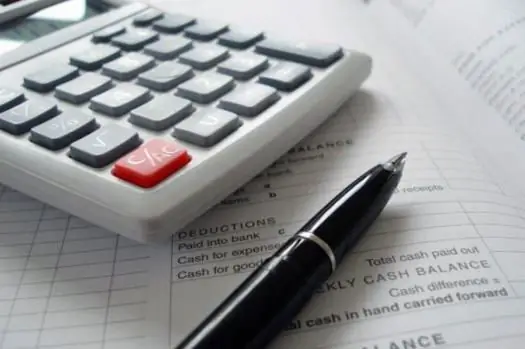- Author Isaiah Gimson [email protected].
- Public 2023-12-17 02:53.
- Last modified 2025-01-24 12:06.
The balance sheet is a way of summarizing information and grouping the assets of an enterprise and the sources of their formation at a certain date in monetary value. Balance indicators characterize the state of the enterprise at a certain moment.

Instructions
Step 1
When drawing up the balance sheet, keep in mind that the data at the beginning of the reporting period must correspond to the data at the end of the previous period. All balance sheet items must be confirmed by inventory data of property, liabilities and calculations. Offsetting of assets and liabilities, profit and loss is not allowed, except for the cases stipulated by the Accounting Regulations. In the heading part of the balance sheet, indicate the reporting date, full name of the organization, its TIN, location, organizational and legal form, main activity, date of approval of the balance sheet.
Step 2
The balance sheet is divided into five sections. In the first section "Non-current assets" indicate the value of intangible assets, fixed assets, construction in progress. In addition, in the same section there is a line “Profitable investments in material assets”. It designates the property that the company is going to use for rent, lease or rent (balance 03). Fill in the lines "Long-term financial investments", "Deferred tax assets" (account balance 09), "Other non-current assets". The latter include those non-current assets that were not reflected in the previous lines of this section.
Step 3
Next, proceed to the formation of the second section "Current assets". Reflect information on the stocks and costs of the enterprise in the line "Stocks". Enter the total amounts of short-term and long-term receivables in lines 230 and 240. At the same time, select the buyers' receivables in the analytical lines. Indicate all short-term loans and short-term financial investments in line 250 “Short-term financial investments”. Reflect the balances in the cash desk and on current accounts in the line "Cash". Fill in the line "Other current assets".
Step 4
Section III "Capital and reserves" begins with the line "Share capital". Line 420 reflects the balance of account 83 "Additional capital". The line "Reserve capital" must be filled in without fail only for joint stock companies. Retained earnings of previous years and the reporting period are shown in the term "Retained earnings (uncovered loss)".
Step 5
In the fourth section "Long-term liabilities" in line 510 "Loans and credits" the balance on account 67 "Settlements on long-term credits and loans" is reflected. In the line "Deferred tax liabilities", transfer the balance of account 77. Indicate other long-term liabilities of the company in the appropriate line.
Step 6
Section V "Short-term liabilities" begin on line 610 "Loans and credits". The balance on account 67 "Short-term credits and loans" is transferred to it. In the line "Accounts payable", separate in separate amounts the amount of debt to suppliers and contractors, on wages, to state and non-budgetary funds, on taxes and fees, to other creditors. In the line "Indebtedness to the founders for the payment of income" shall be reflected the amount of accrued but not paid dividends. " Income received by the enterprise in the reporting period, but refer to future dates, indicate in the line "Deferred income". Transfer the accrued reserve on account 96 to the line "Reserves for future expenses". Complete the line “Other current liabilities”.






